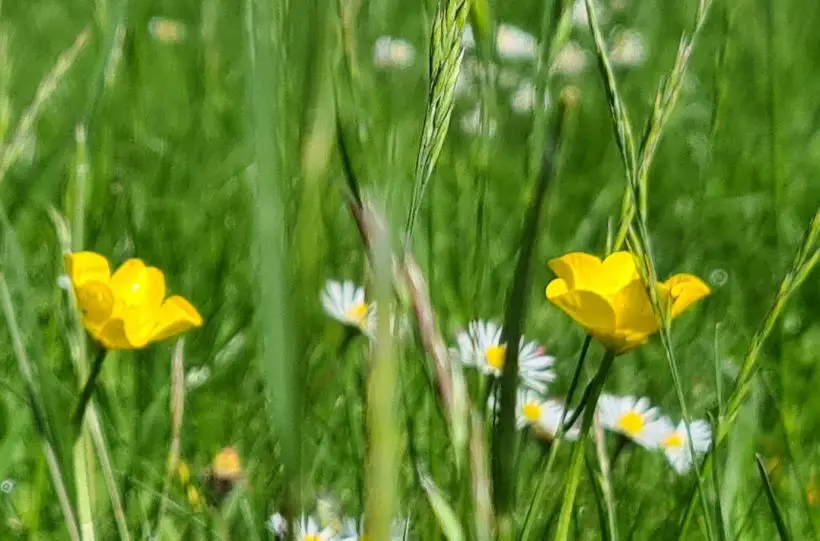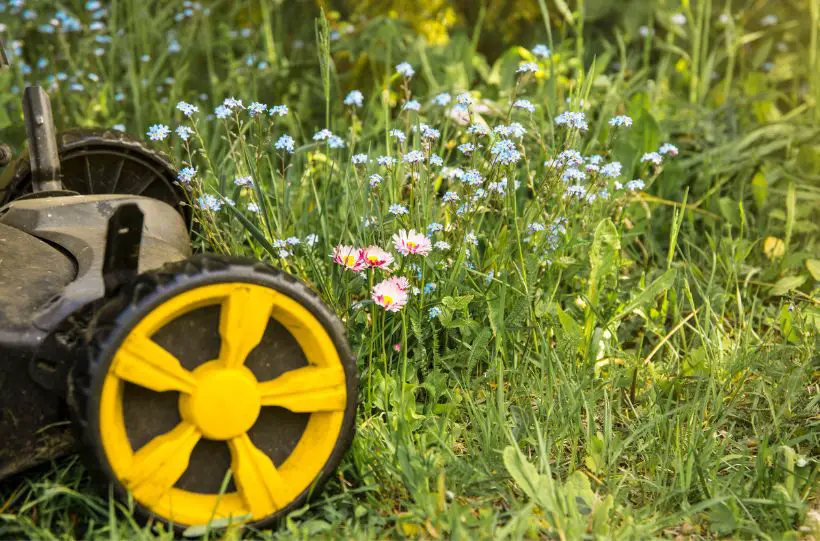How to Participate in No-Mow May and Save the Bees
What are the first signs of spring? It might be birds chirping, the early blooming bulbs and plants popping up in your garden, and the grass finally turning that beautiful shade of green.
While it might feel like your lawn mower has been collecting dust in your garage, it can feel like you go from shoveling snow to mowing your lawn overnight.
No Mow May movement began in the United Kingdom and has been catching on in the United States. While it might sound like a break between the snow shovel and the lawn mower, it’s not about letting your lawn go but more about helping the bees!

What is No Mow May?
No Mow May has one simple goal, not to mow your lawn during the month of May. While this might sound like a great way to take a month off from lawn care, it actually has a dual purpose.
This will allow the flowers on your lawn to bloom and help feed hungry bees just emerging from their hibernation. During this time, flowers become quite scarce, making it difficult for bees to wake up from a long slumber.
Neat and tidy lawns might look nice, but they do little to provide food for bees. No Mow May focuses on the start of the growing season because it’s a critical time for hungry bees and newly emerged.
By allowing your lawn to grow just a little during the month of May, you can provide valuable nectar and pollen that help your neighborhood pollinators thrive.
How you Can Do More by Doing Less
Mowing your lawn less frequently will help create a habitat that promotes diversity, not just for the bees but for other pollinators as well.

One way you can help make a difference for the pollinators in your neighborhood is by committing to not mowing at all or a Low Mow Spring approach instead to reduce the number of times you mow your lawn during the early growing season.
How to Participate in No Mow May
Going a whole month without mowing just isn’t possible for some people. However, there are several ways you can participate in No Mow May that go beyond just thinking about your own lawn.
- Educate your neighbors: let them know about the impact No Mow May or even a few weeks of not mowing could make. It can be as simple as putting up a no-mow May sign in your yard to let everyone know.
- Stay current on your local rules and guidelines: Many cities have HOAs with strict guidelines about lawn height. Know what you can do and determine if you have any restrictions first.
- Involve community leaders: Talk with your HOA and city officials and convince them to adopt a No Mow or Low Mow May. Even if you don’t live somewhere with restrictions, an official endorsement by your local leaders can help encourage others to partake.
What is The Downside of No-Mow May?
While you are helping the bees, one of the downsides is that you may be harming the grass in the process. It reduces the process of photosynthesis, which may result in your grass not growing quite as well.
No Mow May may not be possible for everyone. However, even if you can’t reduce the number of times you mow your lawn due to strict HOA guidelines or other factors, there are still plenty of steps you can take to save the bees and other pollinators in your neighborhood.
For more top tips on creating a pollinator-friendly garden, make sure to read these posts:
